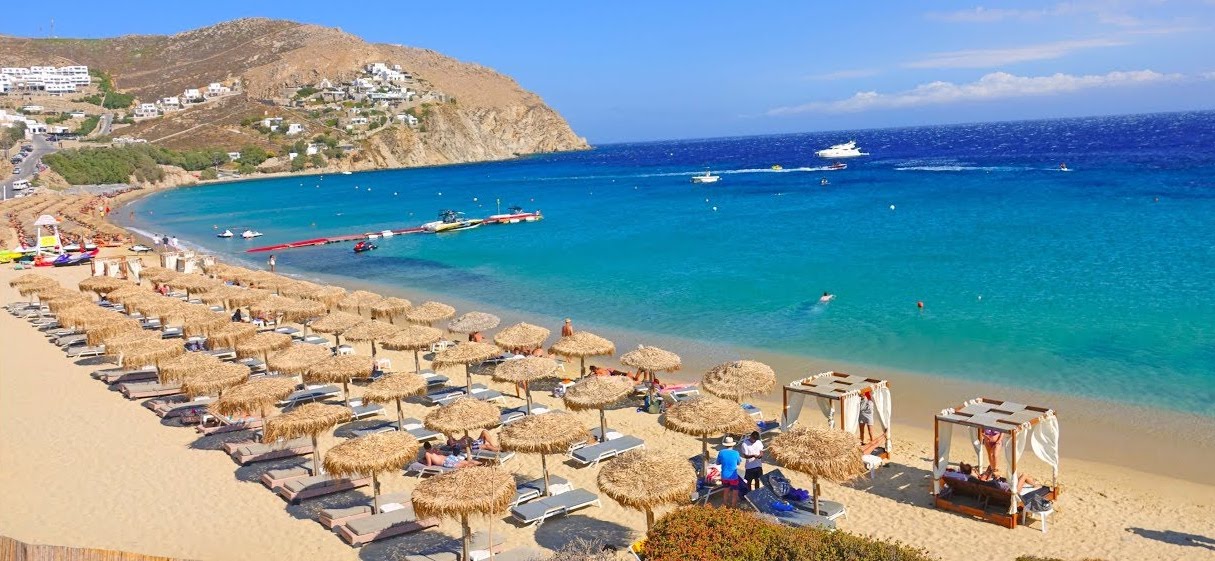(Editor’s note: This is Pt. 3 of a three-part series exploring the best beaches in Europe. You can jump to Pt. 1 here and Pt. 2 here.)
Planning a beach holiday this summer? Europe is the place to be, expats.
Our 2023 list is as comprehensive as possible, with destinations for all tastes and budgets. What they all have in common is that they are “simply the best,” to quote Tina Turner. You will never get bored as there are many activities on the beaches themselves and, of course, the attractions of the countries where they are located.
Pack your swimwear but also your hiking shoes, a hat and sunscreen … and maybe that blazer and a little black dress for dinner.
Greece
With a stunning 6,000 islands, of which only 227 are inhabited, and several seas bordering the country, not to mention the mainland, there are bound to be beaches that need to be included in this list. If you, like me you are a fan of Empress Elizabeth of Austria, you will be familiar with the island of Corfu which was her favorite summer destination. She even built her summer palace, called Achilleion, there, a palace that is now a museum.
As for the beaches, if you want your choice of sand/pebbly beaches with views, Corfu is the place. You will find a nice variety. And you can also visit some of the sets used for the Masterpiece Theatre series, “The Durrells in Corfu.”
• Nissaki Beach (also spelled “Nisaki”), which is actually a village on the northeast edge of Corfu with white sand/pebble beach and great views of a national park on the Albanian coast. The village has a lot of amenities including luxury hotels. And it’s sort of the entrance to the chi-chi north-east peninsula and Agni, Kassiopi and San Stefano bays.
This is not an isolated area no one knows about. This is a destination for those who seek low-key days of lounging, dining and shopping. And it’s expensive, with top-end villas running tens of thousands of euros per week at peak summer rates.
• Historical and romantic Crete’s beaches come in gold and black, and some beaches are white.

And then, there’s Elafoníssi, located on the southwestern tip of Crete. The peninsula’s white sand beaches become pink in many places, all thanks to the many seashells crushed by the turquoise waters of the Mediterranean.
And speaking of those waters, the shallow depth near the breaking point of Elafoníssi is perfect for your little ones to play in and for you to cross to the other side of the peninsula. Elafoníssi is a protected nature reserve, home to the loggerhead sea turtle among other rare animals and plants.
While the main beach draws crowds during the summer months, other areas along the peninsula are less so, perfect for leaving your clothes behind.
• Finally, there is Mykonos, since many years, the favorite island of the LGBT community. The longest, sandy gay beach on the island with all facilities, clothing optional, crystal clear water and everything you could wish for in a chic resort, is Elia Beach, a quiet resort amid the madness.
France
We will leave out the the Cote d’Azur and overcrowded Saint Tropez and go straight to something more attractive – Corsica.
Directly south of France, the island was held by the Republic of Genoa from 1284 AD to 1768, when it became part of France as part of a debt payment to King Louis XV; thus, there’s a lot of Italian influence in the island culture, an influence that exists to this very day.
If you’re looking for a French beach (mostly) free of crowds, then you’ve come to the right place: Corsica’s own Palombaggia. The beach is the most famous of all the beaches in Corsica, its two kilometers of golden sand flanked by pink granite headlands and pine trees.
The paradise has shallow waters for swimmers finding their sea legs, while more experienced swimmers can go snorkeling among the many schools of fish traveling through the crystal-clear environment.
If you wish to explore the island further, which you should definitely do, hop on the island railway Chemin de Fer de La Corse and get with no problem from Ajaccio to Bastia.
Spain
You might have waited for the best Spanish beached to come up. Please refer to our latest post here.
Let’s just add a beach on the island of Ibiza, an ever popular destination. Despite being a party island, you can find a quiet spot there too.
Sa Caleta:
Electronic music fans need no introduction to this hot spot. For everyone else, 150 kilometers to the southeast of Valenica, Spain is the island of Ibiza (Eivissa in Catalàn). Ibiza is the place where spring break, summer holiday, nightlife and electronic dance music come together in a sudsy, wubby, bacchanalian celebration of life ,lasting year-round.
If you’re looking for serenity, however, Ibiza has you covered as well. On the southern coast of the island is Sa Caleta, a cove located 11 kilometers west of Ibiza Town. The cozy horseshoe-shaped bay was originally a natural harbor for Phoenician settlers from 654 B.C. to 594 B.C., and serves local fishing boats today.
Sa Caleta’s crystal-clear, shallow waters are excellent for snorkeling and swimming, while the sandy beach and surrounding red cliffs provide the perfect backdrop for relaxing under the golden sun. The beach is also popular with locals, and thus – because of its small size – can be crowded on the weekends.
Should you be hungry and/or thirsty, though, a short walk to the Sa Caleta restaurant, which has what you need, especially if you love seafood. And if you need more relaxation, a masseur sets up shop at the entrance of the beach during the high summer months to help massage the stress of life away.
Or the hangover from the night before.
––––––––––
See more about Europe’s beaches here in Dispatches’ archives.
Inka Piegsa-Quischotte is an international attorney-turned-travel and lifestyle writer based in Spain. She has contributed to BBC/Travel, several in-flight magazines, TripSavvy (Spain) and TravelAwaits among many other publications.














